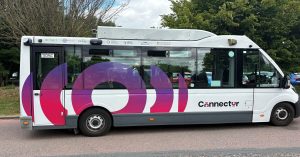Wayve, a self-driving technology startup based in the UK and California, has introduced LINGO-1, a groundbreaking Vision-Language-Action Model (VLAM) designed to enhance the learning and explainability of its AI Driver technology, which powers self-driving vehicles. This innovation aims to provide a deeper understanding of the decision-making processes behind autonomous driving, ultimately ensuring the development of a safer and more intelligent self-driving system.
Prior to the development of LINGO-1, artificial intelligence (AI) neural networks used in self-driving technology offered limited insights into the reasons behind their decisions. Wayve recognized the importance of transparency in autonomous systems and sought to bridge this gap with their VLAM model.
LINGO-1 was trained using real-world data collected from Wayve’s expert drivers while they provided commentary as they drove. This approach allowed the model to explain the rationale behind its driving actions, offering a valuable layer of transparency to the AI’s decision-making process. Incorporating language into the model not only aids in interpreting and explaining AI decisions but also enhances training capabilities.
One unique feature of LINGO-1 is its ability to respond to questions about various driving scenarios. This interactive aspect enables Wayve to gather feedback and make continuous improvements to the model. By allowing human interaction with the AI system, Wayve can fine-tune and refine its self-driving technology based on real-world experiences and insights.
Wayve’s operations span both London and California, with a fleet of vehicles conducting testing in cities across the UK. The company has an ambitious goal to be the first to deploy autonomous vehicles in 100 cities worldwide, signaling its commitment to advancing self-driving technology on a global scale.
Alex Kendall, the Co-founder & CEO of Wayve, expressed his enthusiasm for LINGO-1, highlighting its significance in the realm of embodied AI. The integration of vision, language, and action in LINGO-1 promises to deliver more intelligent and trustworthy autonomous vehicles. Kendall emphasized the role of natural language in enhancing our understanding and interaction with robotic systems, paving the way for safer and more efficient transportation.
Kendall also emphasized Wayve’s dedication to pushing the boundaries of scientific innovation to create a safer, smarter, and more sustainable future for transportation. LINGO-1 represents a significant advancement in self-driving technology, improving the overall intelligence of Wayve’s AI Driver system while also fostering public trust in autonomous vehicles. The introduction of LINGO-1 is just the beginning of the journey to maximize its potential and revolutionize the world of self-driving technology.







